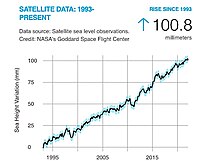
Photo from wikipedia
In dark or poorly lit environments, it is often difficult for the naked eye to distinguish low-light-level images because of low brightness, low contrast and noise, and it is difficult… Click to show full abstract
In dark or poorly lit environments, it is often difficult for the naked eye to distinguish low-light-level images because of low brightness, low contrast and noise, and it is difficult to perform subsequent image processing (such as video surveillance and target detection). To solve these problems, this paper proposes a low-light-level image enhancement algorithm based on deep learning. First, the low-light-level image is segmented into several super-pixels, and the noise level of each super-pixel is estimated by the ratio of the local standard deviation to the local gradient. Then, the image is inverted and smoothed by a BM3D filter, and the structural filter adaptive method is used to obtain complete images without noise but with the correct texture. Finally, the noise-free image and texture-complete images are applied to the integrated network, which can not only enhance the contrast but also effectively prevent the over-enhancement of the contrast. The experimental results show that this method is superior to traditional methods in terms of both subjective and objective evaluation, and the peak signal–noise ratio and improved structural similarity are 31.64 dB and 91.2%, respectively.
Journal Title: Multimedia Systems
Year Published: 2020
Link to full text (if available)
Share on Social Media: Sign Up to like & get
recommendations!